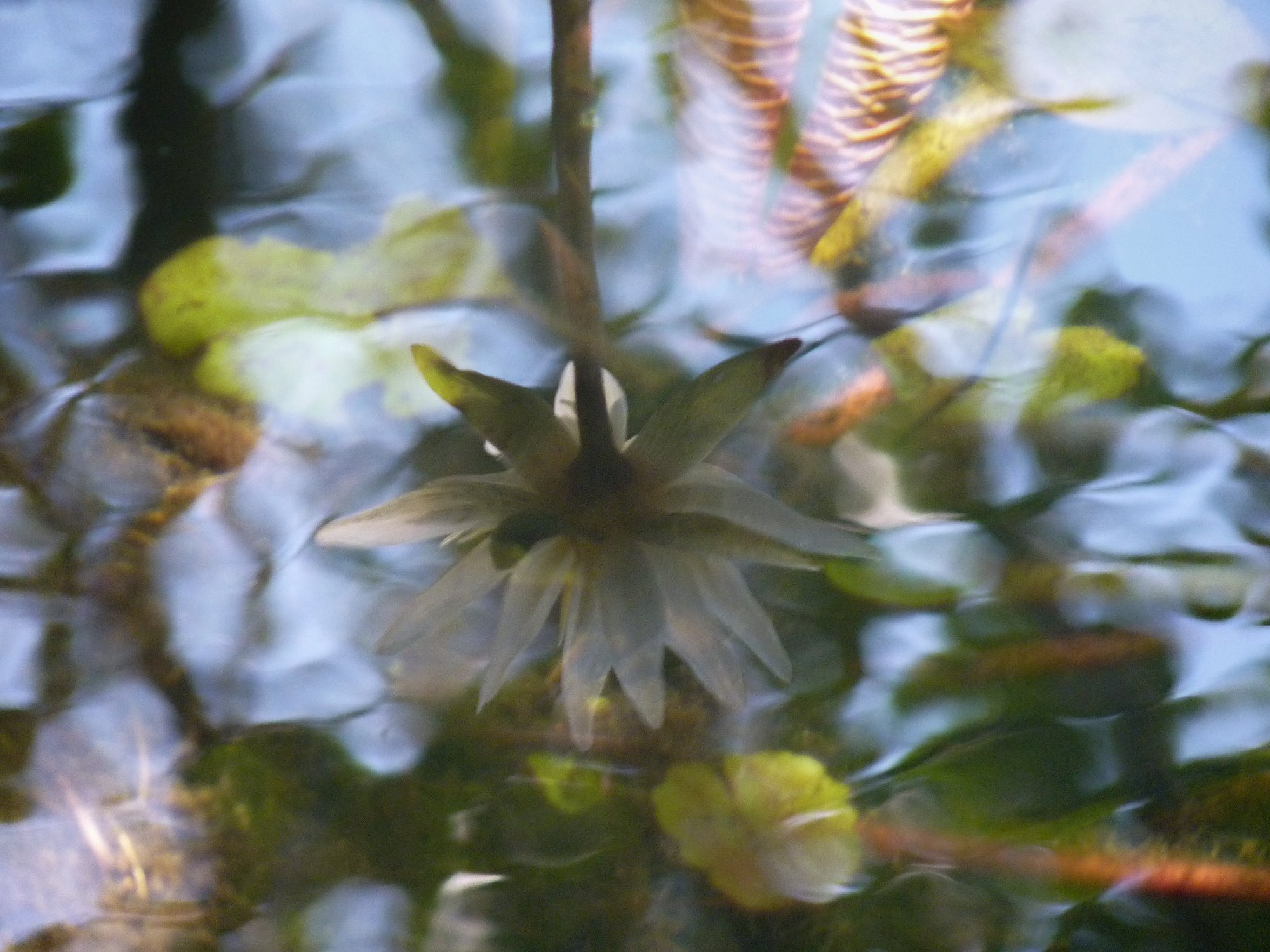In defense of Mayan land and life
Young Mayans enjoy Huay-Pix lake, which is located in the extreme south of Quintana Roo, and is part of a large system of lakes that includes Bacalar Lake and the Hondo River. January 2021, photo © Haizel de la Cruz.
Interview · Haizel de la Cruz · February 22, 2024 · Leer en castellano
In the very distant past, our great grandmothers and grandfathers founded the Mayan town of Bacalar because of the presence of a lake. Most towns in the Yucatan Peninsula grew around a water source. Bacalar means “surrounded by reeds,” a combination of the Mayan word Bak', which means “surround,” and jalal, which means “cane” or “reed.”
The lake in Bacalar is known for its seven colors, although it is more accurate to say that there are seven shades of blue. There are also three cenotes. The town sits in the coastal state of Quintana Roo, and the people who live there plant corn, squash, beans, papaya, pineapple, banana, mango and other fruits and vegetables. There is also beekeeping and community tourism.
In years past, people from Bacalar lived around the lake, but things have changed. Today there are large hotels, restaurants and tourist-oriented businesses all along the lakeshore.
Over the last decade, the lake has become a water park for tourists and a source of revenue for businessmen. Bacalar will be home to a station of the ill-named “Mayan Train,” which will impact the lake’s health and that of the Mayan people. It is one among other government-sponsored mega-projects that will damage our social, economic, organizational, political and cultural wellbeing.
Just over 15 years ago, Mexico’s Ministry of Tourism (Sectur) declared Bacalar a “Pueblo Mágico.” When Miguel Torruco, the agency’s head, announced this, he said that good things would soon come to Bacalar. His statements reveal his interest in mass tourism. When he says that positive things are on the way, we ask: positive for whom?
As Mayan people, we have watched with concern as megaprojects have arrived to our territory. In response, we have organized at the Peninsular level through the Assembly of Defenders of Mayan Territory Múuch' Xíimbal, of which I am a member.
Our assembly’s goal is to defend Mayan life. To do so we have forged a series of agreements: we will not sell or rent the land; we say “no” to religion and political parties and “yes” to Mayan culture and language, to the defense of our rights and to our identity as Mayan peoples.
As Mayan people, we live in relation with animals, birds, stones, wind, fire, water, and the Yuum [guardians].
Today we worry our entire Mayan relational way of life is threatened by megaprojects, including genetically modified soybean production, pig farms, high impact tourism, photovoltaic and wind energy installations, and, now, the so-called Mayan Train.
In January, the Assembly of Defenders of Mayan Territory Múuch' Xíimbal, which means "we walk together," celebrated its sixth anniversary as an organization. In the context of this celebration, I spoke with a member of the assembly in Bacalar.
Throughout the interview, he noted that violence in the area has increased since the arrival of the train. He also voiced his disagreement with Torruco and other government officials, who claim that Mayan residents of the area want high-impact tourism.
He emphasized that the communities oppose the train, but that many are misinformed, as information does not always get to them. The person that I interviewed asked to be anonymous for fear of reprisals. Our conversation has been edited for clarity and length and translated to English by Ojalá.
Hotels, restaurants, and tourism centers were established on the shore of Lake Bacalar, displacing residents. December 2023, photo: Haizel de la Cruz.
Haizel de la Cruz: To start off, can you tell us a little about Bacalar?
Compañero de Bacalar: It has a long history as a town. It was founded as a Mayan town more than 1500 years ago, centuries before the arrival of the Spanish. The population is Mayan, and some have come from neighboring states. Until about 10 or 15 years ago—relatively recently—almost everyone in town knew one another. I think that this helped keep us safe.
You know your neighbors. Everybody gets along, everybody has some kind of friendship and families can be close. Many belong to the same family. Bacalar was peaceful. You could visit homes, walk the streets, travel along the backroads and get to your little plot of land, to your cornfield, without any issue.
Drug trafficking was non-existent. Things were calm, as they have always been in Mayan communities. The population took care of itself and made sure that things stayed quiet. There weren’t any police or soldiers in the town. People were safe and kept each other safe.
What we’ve seen is that the violence has appeared and grown worse as the government has pushed to make Bacalar a tourist destination, a "Pueblo Mágico."
HdlC: Do you think that the violence has to do with the announcement of the construction of the tracks?
CdB: The violence is being triggered mainly by the train, which is a mega-project, as well as the other mega-projects associated with it: airports, hotels, these types of things. It’s the state that is imposing these projects on the area and the owners are mainly from the [Ministry of Defense].
And we’ve seen that the megaprojects also bring with them the violence associated with organized crime. The train—which is not Mayan—is under construction and now there is an enormous wave of violence, which we’ve never before seen in this area or anywhere in Mayan territory.
This is linked to kidnappings, extortions, forced disappearances and dismemberments.
This type of violence used to be unthinkable. It is not normal here. It’s not something we have seen before.
HdlC: What is your interpretation of the violence in your community?
CdB: We see [violence] as part of a system. When the government imposes megaprojects, organized crime starts to flare up.
The government, which is also a narco-government, has the same goals as organized crime: to dispossess the Indigenous peoples and take their lands, their water, their forests. It is totally absurd for them to say, “We’re militarizing the area for the good of the population.”
They are militarizing to defend their drug traffickers and to defend their megaprojects, which create the demand for tourism. The drugs don’t really pass through here for local consumption, but rather for sale and distribution [to tourists].
Previously drug trafficking wasn’t really an issue. This type of thing didn’t exist in the communities, although we did see it in the more touristy areas of Quintana Roo, including in Cancun, Playa [del Carmen], Tulum and Mahahual. Those are the places with the greatest demand for these types of substances.
The government sees Cancun as an example, as a model of development to follow, but it fills us with fear.
The náab flower (lotus flower) at Bacalar Lake in April of 2017. Photo: Haizel de la Cruz.
HdlC: You were saying that the state tries to foster division in the community to make it easier to dispossess people and seize the territory. Tell me more about how you see this.
CdB: They [people from the government] know how to penetrate the communities and divide them.
With the boom in tourism, they started to see this entire region as an economic opportunity. Many of those who work in the hotels are exploited. They don't know how these types of businesses are managed. They’re being deceived. They think that it’s okay to work a ton and not receive a proper salary. Most young people live in poverty.
It is hard for them to access education and attend the university. This also has to do with the dispossession of land and the increased cost of basic things like food and electricity. Bacalar is getting more expensive. Salaries are not keeping up and neither is people’s ability to consume.
[Drug traffickers] are capturing younger people, who are what gives our community strength. They should be learning to defend the land, to become stronger, as they will inherit this territory.
Today, instead of thinking about defending their land, they are thinking about defending their cartel or their boss. Will there be anyone left to fight for the land if the young people don’t?
HdlC: Finally, how do you organize in your community through the Assembly of Defenders of Mayan Territory Múuch' Xíimbal?
CdB: Much of what we do is focused on taking information to the communities, slowly knitting the fabric of our community, talking with our community, being in touch, and sharing information through texts and small meetings. We try to get closer and listen to peoples’ fears and pain and find ways to support them. We have also filed injunctions, because legal action is part of the journey too.
We also participate in No-Radio Múuch' Xíimbal. We use it to share information about what we are experiencing in our communities, to reinforce our identity and to encourage a critical perspective on what’s happening.
Fortunately, more and more people are starting to question the Fourth Transformation [the name President Andrés Manuel López Obrador has given to his six-year term in office]. Can we move from there to another kind of action? We are thinking about what we are going to do as communities. That is part of what we’re doing in the Assembly.




